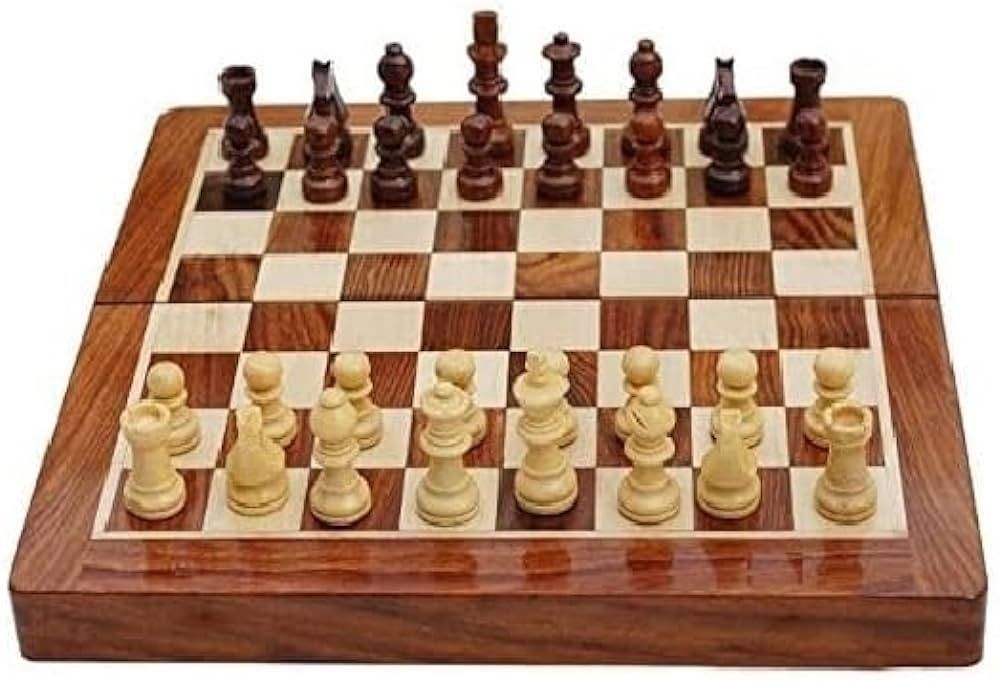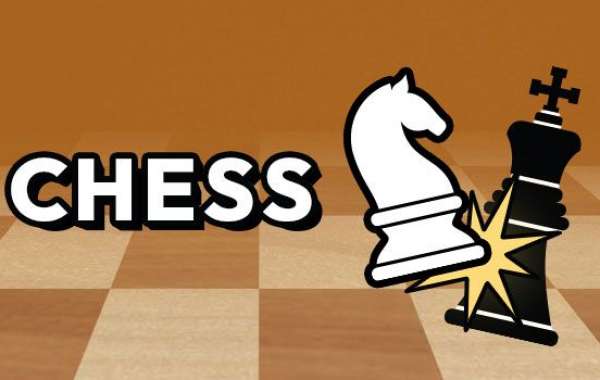
Chess, known as the “game of kings,” is more than just a board game. It is a timeless battle of wits, strategy, and deep thinking that has captured the imaginations of people worldwide for centuries. From its ancient origins to its modern-day relevance, chess remains a fascinating and intellectually stimulating pursuit. In this article, we will delve into the rich history, fundamental rules, essential strategies, and the cultural impact of chess, all while exploring why this game continues to thrive in the digital age.
The Origins of Chess
The history of chess is as intricate as the game itself. It is believed to have originated in northern India around the 6th century during the Gupta Empire. The game was initially known as chaturanga, which translates to “four divisions of the military”—infantry, cavalry, elephants, and chariots. These divisions were represented by the game pieces that eventually evolved into the modern-day pawns, knights, bishops, and rooks.
From India, chess spread to Persia, where it was called shatranj. The game became deeply embedded in Persian culture, and it was here that the terms “check” and “checkmate” were coined. The word “checkmate” comes from the Persian phrase Shah Mat, meaning “the king is dead.” With the Islamic conquest of Persia, chess spread throughout the Islamic world, eventually reaching Europe via Spain and Italy.
By the 15th century, the game had undergone significant changes in Europe, most notably the enhancement of the queen’s power, transforming her into the most powerful piece on the board. This change, along with others, contributed to the development of modern chess. The game became faster, more dynamic, and more reflective of the evolving strategies and tactics that are still studied and admired today.
The Rules of Chess
Chess is played on an 8x8 grid, totaling 64 squares, with each player controlling 16 pieces: one king, one queen, two rooks, two bishops, two knights, and eight pawns. The objective is simple in concept but complex in execution: to checkmate your opponent’s king, putting it in a position where it is under threat of capture and cannot escape.
The Pieces and Their Moves:
King: The most crucial piece in the game. The king can move one square in any direction. The game is lost if the king is checkmated.
Queen: The most powerful piece, capable of moving any number of squares in any direction—horizontally, vertically, or diagonally.
Rook: Moves any number of squares, but only horizontally or vertically. It is a key piece for controlling open files and ranks.
Bishop: Moves diagonally any number of squares. Each player has two bishops, one on a light square and one on a dark square.
Knight: Moves in an “L” shape—two squares in one direction and then one square perpendicular. The knight is unique in that it can jump over other pieces.
Pawn: Moves forward one square but captures diagonally. Pawns have special abilities, including the potential to promote to any other piece (except the king) upon reaching the opponent's back rank.
Special Moves:
Castling: A defensive maneuver involving the king and one of the rooks. The king moves two squares towards the rook, and the rook moves to the square next to the king. Castling is only possible if neither the king nor the rook has moved before, the squares between them are empty, and the king is not in or moving through check.
En Passant: A special pawn capture that can occur if a pawn moves two squares forward from its starting position and lands adjacent to an opponent’s pawn. The opponent can capture the pawn as if it had only moved one square.
Pawn Promotion: If a pawn reaches the opponent’s back rank, it can be promoted to any piece, usually a queen, which is the most powerful option.
Chess Strategies and Tactics
Chess is a game of strategy, requiring players to think several moves ahead and anticipate their opponent’s actions. The game can be divided into three main phases: the opening, the middlegame, and the endgame, each with its own strategic objectives.
Opening Strategies:
The opening phase sets the tone for the rest of the game. During this stage, players focus on controlling the center of the board, developing their pieces, and ensuring their king's safety, often through castling. Some popular openings include:
The Ruy-Lopez: An opening that emphasizes control of the center and develops pieces quickly. It is named after the Spanish priest Ruy López de Segura, who wrote one of the first comprehensive studies on chess.
The Sicilian Defense: A counter-attacking opening for Black in response to 1.e4, aiming to create an unbalanced position that can lead to dynamic play.
The Queen’s Gambit: An opening in which White sacrifices a pawn in exchange for strong central control and piece development.
Middlegame Tactics:
In the middlegame, the battle intensifies as players execute their strategies. Tactics such as forks (where a single piece attacks two or more pieces simultaneously), pins (where a piece is immobilized because moving it would expose a more valuable piece to attack), and skewers (where an attack on a valuable piece forces it to move, exposing a lesser piece behind it) become crucial.
Key middlegame concepts include:
Piece Activity: Ensuring that all your pieces are active and contributing to your overall strategy. A piece stuck in a corner or behind pawns is often as good as lost.
Pawn Structure: The arrangement of pawns is vital in the middlegame. Weak pawns, such as isolated or doubled pawns, can become significant liabilities.
King Safety: Even after castling, players must ensure their king remains safe from potential attacks as the game progresses.
Endgame Techniques:
The endgame is often where a game of chess is decided. With fewer pieces on the board, precise calculation and knowledge of key endgame principles are essential. Players focus on promoting pawns to gain a material advantage or delivering checkmate with the few remaining pieces.
Important endgame concepts include:
Opposition: A technique in king and pawn endgames where one king uses its position to restrict the movement of the opposing king, often leading to a favorable outcome.
Zugzwang: A situation in which any move a player makes will worsen their position. This is a common scenario in the endgame and can lead to a forced loss.
Pawn Promotion: The ultimate goal in many endgames is to promote a pawn to a queen or another powerful piece, which often tips the balance of power decisively.
The Cultural Impact of Chess
Chess is not just a game; it is a cultural phenomenon with a significant impact on society, education, and popular culture. Throughout history, chess has been associated with intellectualism, strategy, and competition.
Chess in Education:
Many schools worldwide incorporate chess into their curriculums, recognizing the cognitive benefits it offers. Studies have shown that chess can improve memory, enhance problem-solving skills, and develop critical thinking. It teaches patience, discipline, and the importance of planning ahead, making it a valuable educational tool.
Chess has also been used as a metaphor for life’s challenges, emphasizing the importance of strategy, foresight, and adaptability. The game encourages players to think about the consequences of their actions, both in the game and in life.
Chess in Popular Culture:
Chess has made its way into literature, film, and television, often symbolizing intelligence and strategy. Iconic films like Searching for Bobby Fischer and more recently, the Netflix series The Queen’s Gambit, have brought chess to a broader audience, highlighting the psychological depth and the intense competition inherent in the game.
The Digital Age and Chess:
The advent of the internet has revolutionized chess, making it more accessible than ever. Online platforms like Chess.com, Lichess, and the Internet Chess Club allow players to compete against opponents from around the world, anytime and anywhere. These platforms also offer tools for learning, including tutorials, puzzles, and analysis engines.
The rise of online streaming platforms like Twitch has further popularized chess, with streamers like Hikaru Nakamura and Alexandra Botez drawing large audiences. The COVID-19 pandemic accelerated this trend, as more people turned to online chess as a way to stay mentally active and engaged during lockdowns.
Chess Engines and Artificial Intelligence:
The development of chess engines, such as Stockfish and AlphaZero, has changed how chess is studied and played. These powerful programs can analyze millions of positions per second, providing insights that were previously unattainable. AlphaZero, in particular, has introduced new strategies and ways of thinking about the game, challenging even the best human players.
Conclusion
Chess is a game that transcends time, culture, and geography. It is a testament to the enduring appeal of strategy, intellect, and competition. From its ancient roots in India to its modern-day incarnation as a global digital phenomenon, chess continues to captivate and challenge players of all ages and backgrounds.
The game's complexity and depth ensure that it will remain a subject of study and fascination for generations to come. Whether played casually at home, competitively in tournaments, or studied as an art form, chess is a pursuit that enriches the mind, sharpens the intellect, and offers endless opportunities for growth and discovery.




